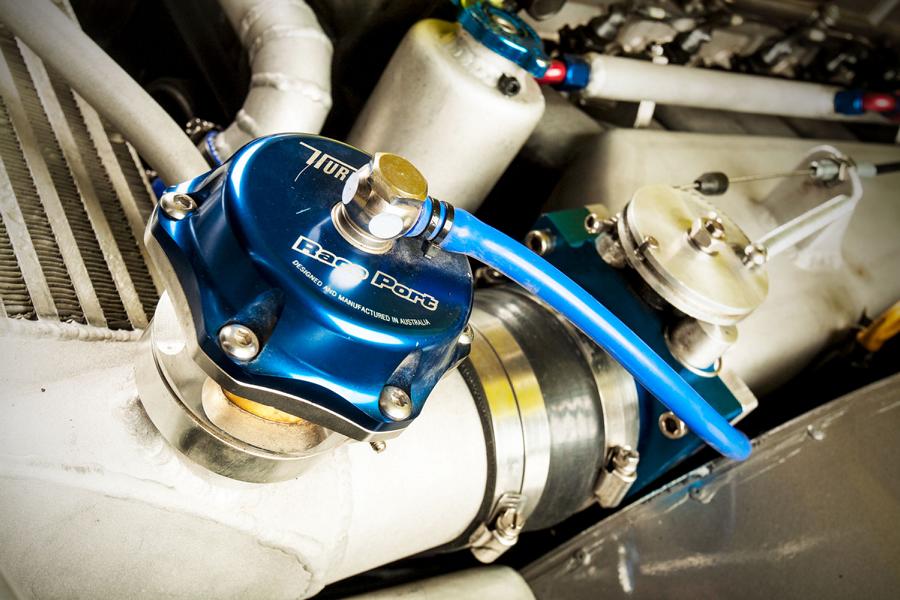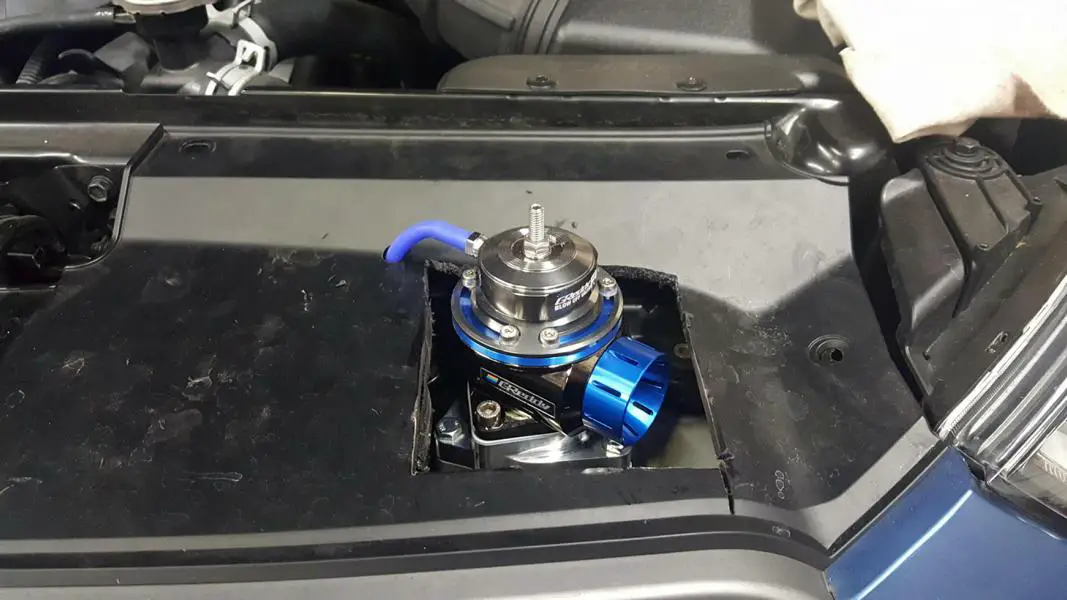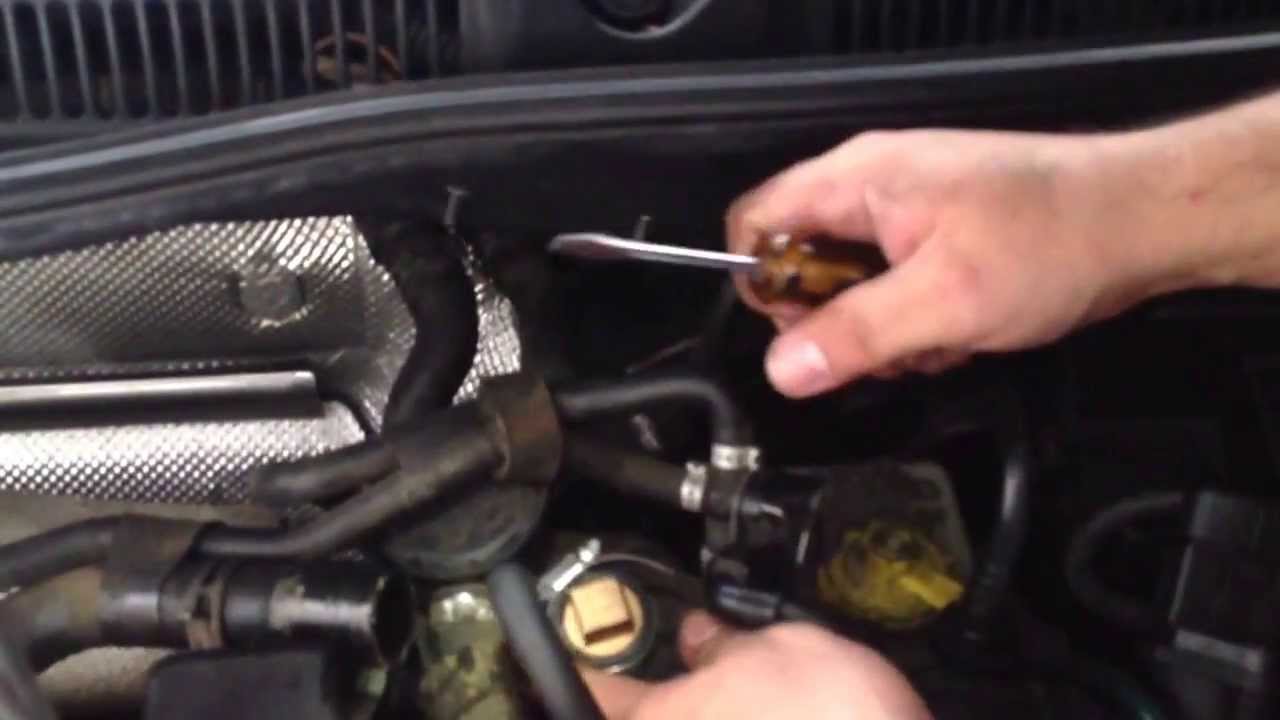Recently updated on September 29, 2023 at 02:19 am
[Update: 29.09.2023] This post was updatedto take more recent information into account. The blow-off valve may be familiar to anyone who enjoys the sound it produces. This valve, which is also called scavenged air valve, pop off valve, or drain valve, is located in the engine compartment and produces a striking noise when used. However, many are unaware of how this noise originates and what is actually the benefit of such a valve.
The function of a blow-off valve
Simply put, a blow-off valve allows excess pressure to escape from the engine's intake. Specifically, this valve is always used in combination with a turbocharger. In order to explain the process, you must first briefly explain how it works turbocharger be explained. The turbocharger's exhaust gas turbine is driven by the exhaust gas flow during acceleration and uses a compressor wheel to compress the air in the intake tract on the other side. When the acceleration stops, the throttle closes, but the exhaust flow continues to drive the turbocharger, so pressure continues to build up despite the throttle being closed.
This continual pressure can cause significant material fatigue, especially in turbocharged turbochargers. To prevent this, the blow-off valve is used. This will allow the excess pressure to escape as soon as the throttle closes. As the pressure escapes, so does the familiar sound. However, there are two types of blow-off valve, of which only one produces the distinctive noise. The closed version allows the escaping air back into the intake tract in front of the turbocharger, so that the noise is not heard so clearly here. The open version of this valve simply lets the air into the atmosphere, with the sound clearly audible.
Installation of a blow-off valve
When retrofitting a blow-off valve, you should ensure that the important components in the surrounding area remain accessible despite installation. Basically, the valve is installed between the throttle valve and the turbocharger, where things are a little tighter in most vehicles. However, many newly built turbo engines already have such a valve as standard. If the valve to be installed is an open model, the air must be prevented from returning. Special aluminum lids are suitable for this.
often not permitted in Germany
The disadvantage of a blow-off valve for every tuning enthusiast is that it is not approved in Germany. Accordingly, you should think carefully about whether you want to install this valve. If you want to buy a blow-off valve, you can expect a wide price range. Cheap valves start at just 30 euros. However, the price of higher-quality models is not yet exhausted, even at 500 euros.
Blow off valves – the summary:
The Blow off valve, also known as Diverter valve or Pop off valve, is a term that makes the hearts of many car tuning enthusiasts beat faster. Known for its distinctive hissing sound, the small component plays an important role in the engine compartment, especially in turbo engines. It helps regulate the pressure in the intake tract and prevents the dreaded turbo lag.
Function and types
The main purpose of the Blow off valve is to protect the turbocharger from damage caused by excess pressure, especially when abruptly releasing the accelerator. The valve releases the air compressed by the turbocharger, preventing excessive pressure buildup and allowing the turbo to spin continuously, eliminating turbo lag. There are open and closed systems. With open systems, the excess air is exhausted into the engine compartment, which is the characteristic “Whoosh” sound generated. Closed systems, on the other hand, direct the air back into the intake tract in front of the turbocharger, which dampens the noise but also ensures more stable idling behavior and better engine response.
Upgrades and Benefits
Tuning fans who trim their engines for higher boost pressure should Upgrade diverter air valveto avoid power losses and protect the turbo. Some popular models for upgrades are 1.8T, Golf 5 GTI, Audi S3, Golf 6 GTI, Ford Focus, Opel Astra and Audi TT. The upgrade keeps boost pressure constant, which not only eliminates turbo lag but also improves torque and engine performance.
Installation and approval
The Installing a blow off valve can be done yourself with few tools and planning, although it is advisable to let a professional do the job if you are unsure. It should be noted that open systems that exhaust air into the atmosphere are not allowed on the road, while closed systems that return air to the system are allowed.
- Synonyms: Blow off valve, pop off valve, diverter air valve, drain valve, “hissing thing”
- Main purpose: Preventing excessive pressure in the intake tract by releasing excess air compressed by the turbocharger.
- Secondary purpose: Preventing turbo lag, maintaining boost pressure during acceleration, protecting the turbocharger from excessive wear and material fatigue.
System types and properties
- Open system:
- Exhausts excess air into the engine compartment.
- Produces a distinct “whoosh” sound.
- May cause rough idling.
- Closed system:
- Directs excess air back into the intake tract in front of the turbocharger.
- Produces a muffled or no “whoosh” sound.
- Provides stable idling and good engine response.
Components and upgrades
- components: Piston, spring, pressure chamber, rubber ring, outlet side, valve housing.
- Upgrade benefits:
- Constant boost pressure, better torque and more power.
- Prevents loss of performance due to backflow of air and excess pressure.
- Improved response through electronic control and sporty sound.
- Upgrade benefits:
Installation
- installation: Between the throttle body and the turbocharger.
- Tools: Basic tools and possibly special connecting parts.
- Preparation: Oiling the pressure chamber, moving the piston on the outlet side.
- Installation time: A few minutes to a few hours depending on experience and the specific needs of the vehicle.
Operating modes and settings
- Operating modes:
- Normal mode: standard installation.
- Pull mode: Valve is reversed, recommended for extremely high boost pressures, but slower.
- Ideas:
- Spring hardness: adjustment to the boost pressure.
- Blow Off Splitter: Allows you to adjust between fully closed, partially open and fully open.
Areas of approval and application
- street legal:
- Closed systems are allowed on the street.
- Open systems are not approved for road traffic and are mainly used in motorsports.
Of course that had not happened yet!
tuningblog.eu has countless other articles on the subject of auto & tuning in stock. Do you want to see them all? Just click HERE and look around. But also off the tuning we want to provide you with news. Themes that go beyond the box you will find in our category Tips, products, information & Co. Following an excerpt from the last reports:
|
Driftcars on trend - because you drive across, you see more. |
||
"Tuningblog.eu" - we keep you up to date on the subject of car tuning and car styling with our tuning magazine and present you the latest tuned vehicles from all over the world every day. It's best to subscribe to ours Feed and will automatically be informed as soon as there is something new for this post, and of course also to all other contributions.
 tuningblog.eu Your magazine about tuning the car
tuningblog.eu Your magazine about tuning the car








